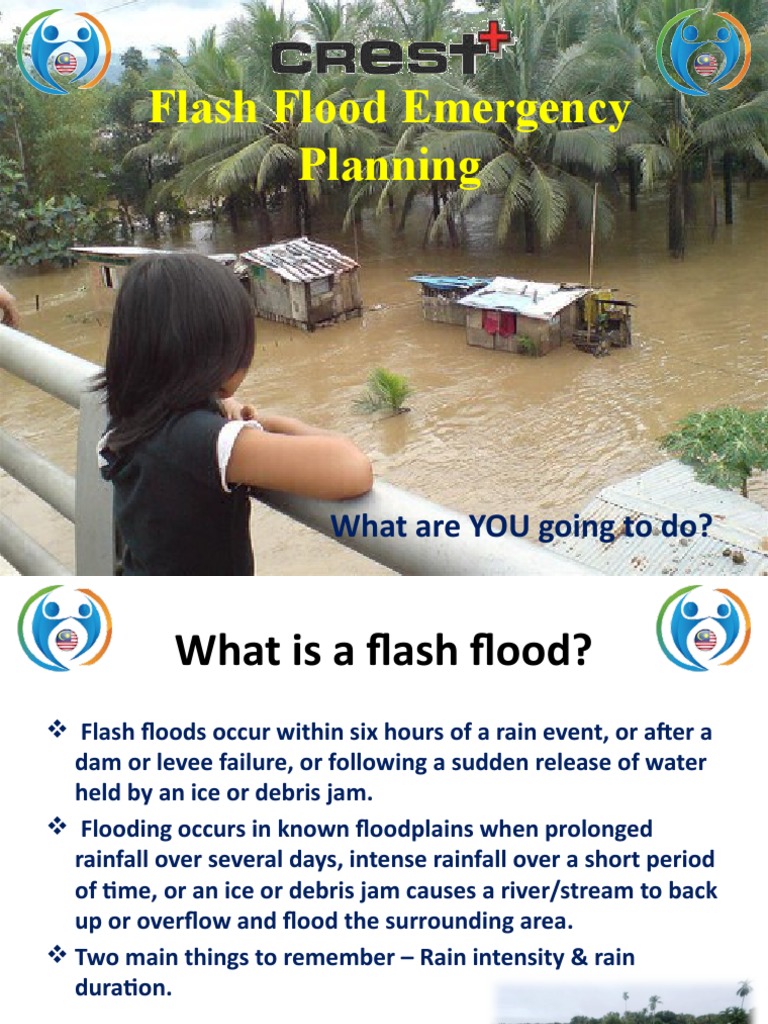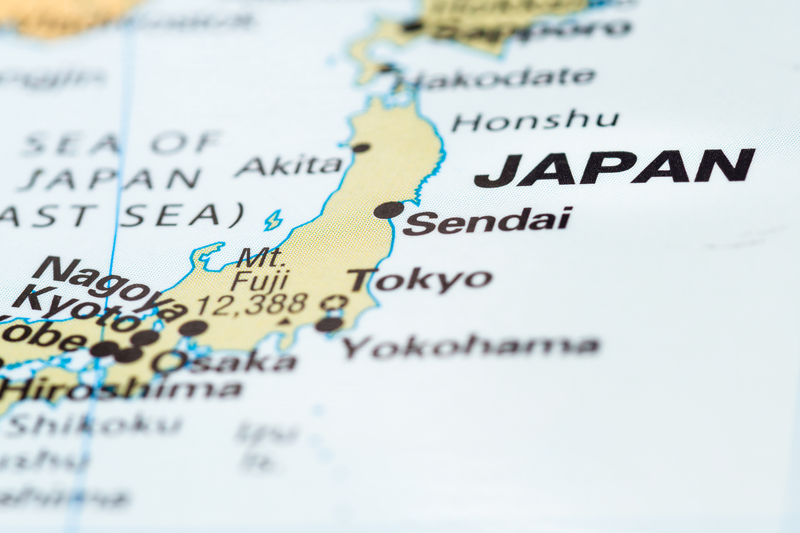Responding To A Flash Flood Emergency: A Survival Guide

Table of Contents
Before the Flash Flood Emergency: Preparation is Key
Proactive planning is your best defense against a flash flood emergency. Taking steps before a flood event significantly reduces risks and improves your chances of survival.
Create a Family Emergency Plan
A well-defined family emergency plan is paramount. This plan should cover communication, evacuation, and essential supplies.
- Develop a communication plan: Establish a primary and secondary contact person outside your immediate area. Designate a meeting point in case family members are separated during the flood. Ensure everyone has access to updated contact information.
- Identify evacuation routes: Familiarize yourself with multiple escape routes leading to higher ground. Identify safe locations and alternative routes, considering potential road closures. Share this information with all family members.
- Pack an emergency kit: Assemble a comprehensive kit that includes at least three days’ worth of supplies. This should include water (one gallon per person per day), non-perishable food items, a first-aid kit, essential medications, flashlights with extra batteries, a battery-powered or hand-crank radio, and a whistle. Don't forget important documents like insurance information and identification.
- Sign up for emergency alerts: Register for your local emergency alert system (e.g., NOAA Weather Radio, local government alerts) to receive timely warnings about impending flash flood emergencies. Consider downloading weather apps on your mobile devices for real-time updates.
Identify Flood-Prone Areas
Understanding your surroundings is critical. Knowing your risk level helps you prepare effectively.
- Understand your risk: Check flood maps provided by your local government or FEMA to identify areas susceptible to flash flooding. Look for historical floodplains or areas near rivers and streams.
- Assess your property: Evaluate your home's vulnerability to flood damage. Consider measures like installing flood barriers, elevating electrical appliances, and relocating valuable items to higher levels. Consider flood insurance if you live in a high-risk area.
- Know your elevation: Understand the elevation of your property relative to surrounding areas. Higher ground offers better protection during a flash flood emergency.
During the Flash Flood Emergency: Immediate Actions
When a flash flood warning is issued, immediate action is crucial. Your response should prioritize safety and swift evacuation.
Evacuate Immediately
If instructed to evacuate, do so without delay. Time is of the essence during a flash flood.
- If instructed to evacuate, do so immediately: Obey all evacuation orders from local authorities. Do not hesitate; your life is at stake.
- Move to higher ground: Avoid floodwaters at all costs. Even seemingly shallow water can be deceptively powerful and swiftly rise. Head towards pre-determined safe locations or designated evacuation centers.
- Never drive through flooded areas: Floodwaters can hide deep ditches, debris, and structural damage. Driving into floodwater puts yourself and others at extreme risk. Even a few inches of water can cause a vehicle to lose control.
- Seek higher ground quickly and safely: Time is of the essence. Use established escape routes to reach safety swiftly. If you are caught in a vehicle, abandon it and seek higher ground if it is safe to do so.
If Trapped by Rising Waters
If you become trapped, prioritize your safety and survival.
- Seek shelter on the highest level possible: If in a building, move to the upper floors or the roof.
- Climb to the roof if necessary: This might be your only option if water continues to rise. Use a sturdy object to signal for help from the roof.
- Signal for help: Wave a brightly colored cloth or use a whistle to attract attention. Try to contact emergency services if possible.
- Conserve energy and stay calm: Remain calm to conserve your energy and make rational decisions. Stay put and await rescue.
After the Flash Flood Emergency: Recovery and Safety
Post-flood recovery requires caution and careful assessment. Safety remains paramount.
Check for Injuries and Damage
After the floodwaters recede, thoroughly assess the situation.
- Assess for injuries: Seek medical attention for any injuries sustained during the flood.
- Inspect your property: Check for structural damage, including foundation cracks, water damage, and electrical hazards. Document any damage with photos and videos for insurance purposes.
- Avoid downed power lines: Report downed power lines immediately to utility companies and local authorities. Never approach downed power lines; they are extremely dangerous.
- Be aware of contaminated water: Floodwaters are often contaminated with sewage and hazardous materials. Avoid contact with floodwater, and take necessary precautions when cleaning up.
Contacting Authorities and Seeking Help
Reach out to relevant authorities for assistance and support.
- Report damages to insurance company: Contact your insurance provider immediately and file a claim, providing detailed documentation of the damage.
- Contact FEMA (if applicable): In the United States, the Federal Emergency Management Agency (FEMA) provides disaster assistance to affected individuals and communities.
- Contact local authorities: Reach out to local officials for information on relief efforts, cleanup assistance, and available resources.
- Support your community in the recovery efforts: Participate in community cleanup efforts or offer support to neighbors affected by the flood.
Conclusion
Preparing for a flash flood emergency can significantly increase your chances of survival and minimize the impact on your life and property. By following the steps outlined in this guide, you can enhance your preparedness and response to a flash flood emergency. Remember, early preparation, prompt evacuation, and swift action after the event are crucial for mitigating the risks associated with flash floods. Don't wait; create your family's flash flood emergency plan today and stay safe. Learn more about flash flood safety and preparedness to ensure the well-being of your family and community.

Featured Posts
-
 Zheng Qinwens Impressive Win Against Sabalenka In Rome
May 25, 2025
Zheng Qinwens Impressive Win Against Sabalenka In Rome
May 25, 2025 -
 Escape To The Country What To Expect When Relocating
May 25, 2025
Escape To The Country What To Expect When Relocating
May 25, 2025 -
 Monaco Nice L Equipe Devoilee Pour La Reception
May 25, 2025
Monaco Nice L Equipe Devoilee Pour La Reception
May 25, 2025 -
 Proposed French Law Restricting Hijab Use For Minors In Public Areas
May 25, 2025
Proposed French Law Restricting Hijab Use For Minors In Public Areas
May 25, 2025 -
 Apple Stock Long Term Investment Despite Reduced Price Target Wedbushs View
May 25, 2025
Apple Stock Long Term Investment Despite Reduced Price Target Wedbushs View
May 25, 2025
Latest Posts
-
 Swiatek Wins In Madrid De Minaur Falls In Straight Sets
May 25, 2025
Swiatek Wins In Madrid De Minaur Falls In Straight Sets
May 25, 2025 -
 De Minaur Out Of Madrid Open After Straight Sets Loss Swiatek Triumphs Over Keys
May 25, 2025
De Minaur Out Of Madrid Open After Straight Sets Loss Swiatek Triumphs Over Keys
May 25, 2025 -
 Alex De Minaurs Madrid Open Exit Straight Sets Defeat And Swiateks Victory
May 25, 2025
Alex De Minaurs Madrid Open Exit Straight Sets Defeat And Swiateks Victory
May 25, 2025 -
 Ealas Historic Grand Slam Appearance In Paris
May 25, 2025
Ealas Historic Grand Slam Appearance In Paris
May 25, 2025 -
 Alex Ealas Paris Grand Slam Expectations And Preparations
May 25, 2025
Alex Ealas Paris Grand Slam Expectations And Preparations
May 25, 2025
